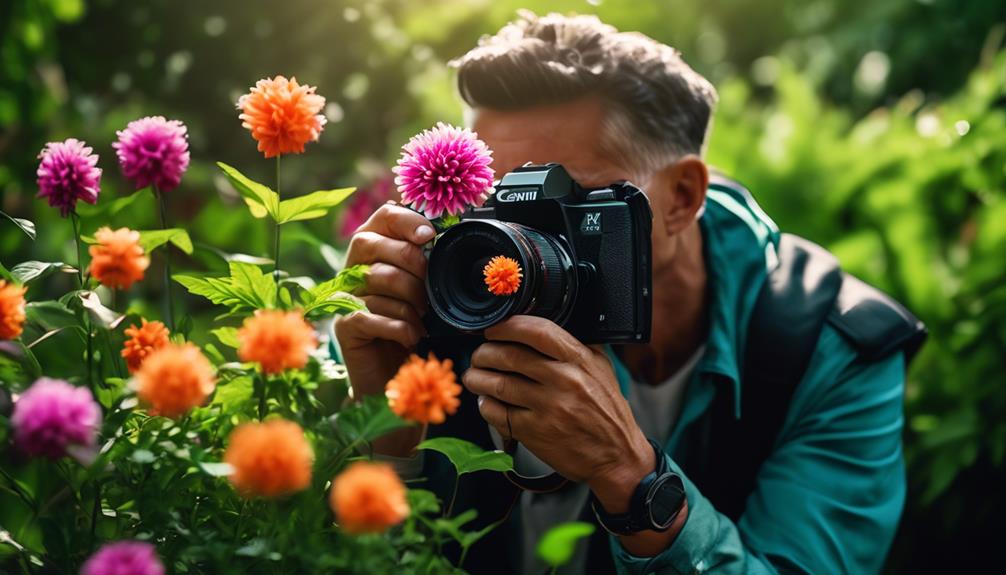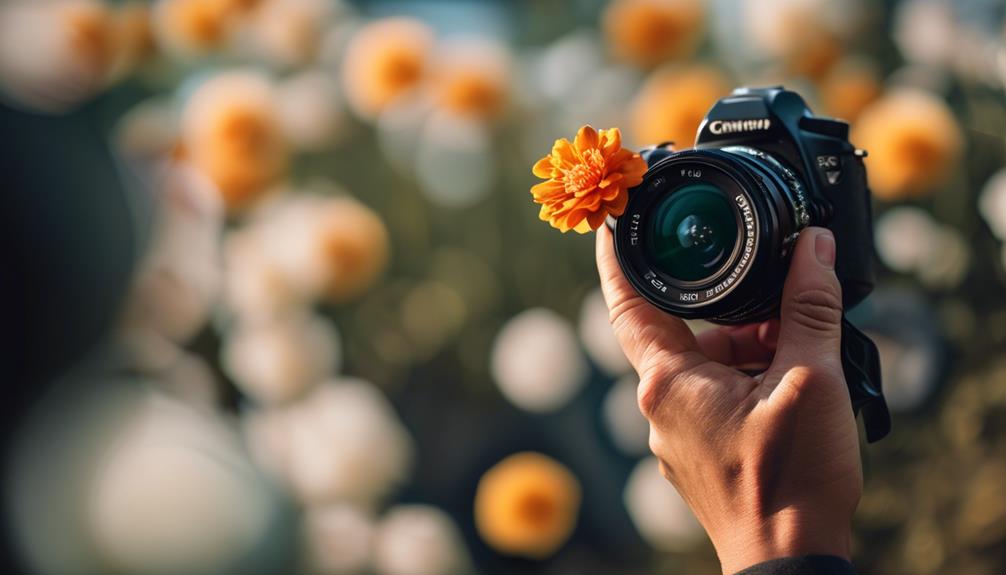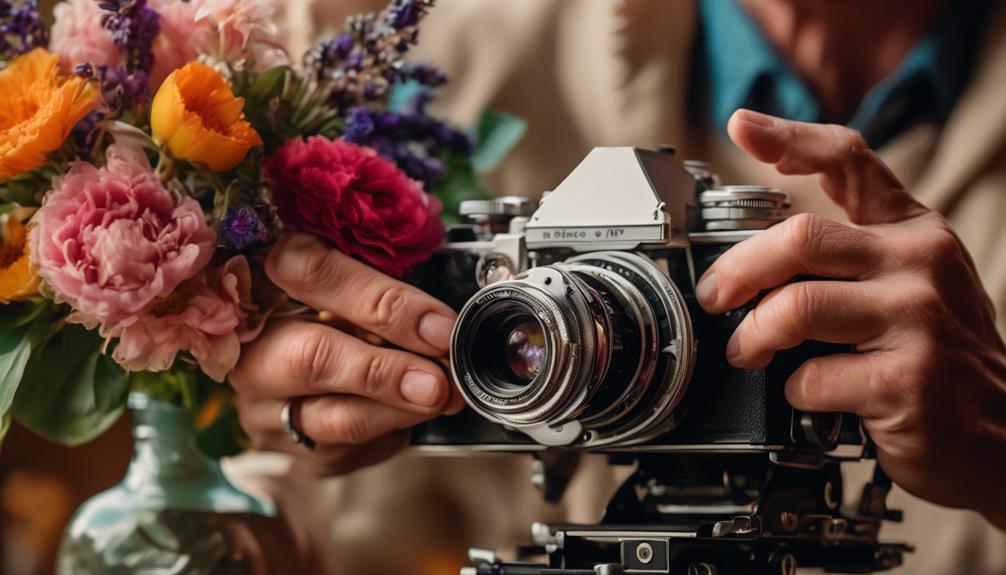Please note this post may contain affiliate links picked by me (Jay) that I have deemed may be of interest or relevant to you the reader of this.
These links do not affect the cost of the thing if you decide to purchase but i may get a little money if you choose to purchase.
For more information on my affiliate link policy click here.
Coincidentally, just as I was browsing through my latest batch of photographs, I realized that there was something missing – that wow factor that takes an image from good to great. It was then that I realized I needed to master the art of depth of field.
You see, depth of field is not just about blurring the background or making the subject pop; it's about creating a sense of depth and dimension in your photographs. And if you're anything like me, you're constantly striving to improve your photography skills.
Well, fear not, because in this discussion, we will uncover the secrets to mastering depth of field, allowing you to elevate your images to a whole new level.
Key Takeaways
- Depth of field is essential for capturing stunning photos and guiding the viewer's attention.
- Aperture controls the amount of light entering the camera and plays a significant role in controlling depth of field.
- Focal length influences the depth of field, with longer focal lengths resulting in a shallower depth of field.
- Shutter speed affects the motion blur and depth of field, with fast shutter speeds creating a deeper depth of field and slow shutter speeds creating a shallower depth of field.
The Basics of Depth of Field
Understanding depth of field is crucial for capturing stunning photos that stand out from the crowd. It's a fundamental concept in photography that can greatly impact the overall composition and storytelling of an image. Depth of field refers to the range of sharpness in a photograph, from the nearest to the farthest object in focus. By controlling the depth of field, we can guide the viewer's attention and create a sense of depth and dimension in our images.
One way to enhance the composition of our photos is by combining depth of field with the rule of thirds. The rule of thirds is a guideline that suggests dividing the frame into a 3×3 grid and placing the subject along these lines or at their intersections. By positioning the subject off-center and using a shallow depth of field, we can create a visually interesting image with a strong focal point. This technique not only adds depth to the photo but also draws the viewer's attention to the main subject.
In addition to composition, depth of field plays a vital role in creative storytelling. By selectively focusing on certain elements within a scene and blurring out the rest, we can emphasize the main subject and separate it from the background. This technique is particularly useful when we want to isolate a subject in a crowded or distracting environment. It allows us to convey a specific message or evoke a particular emotion in the viewer.
Mastering depth of field opens up a world of creative possibilities in photography. It enables us to control the visual impact of our images, guiding the viewer's eye and telling compelling stories. By understanding how depth of field works and using it intentionally, we can elevate the quality of our photographs and create images that truly stand out.
Aperture: The Key to Depth of Field
To create stunning photos with a captivating depth of field, mastering the concept of aperture is essential. Aperture refers to the opening in the camera lens that controls the amount of light entering the camera. It not only affects exposure but also plays a crucial role in achieving the desired depth of field.
Here are four key aspects to consider when it comes to aperture and depth of field:
- Aperture and Exposure: The aperture setting directly impacts the exposure of your photograph. A wider aperture (smaller f-number) lets in more light, resulting in a brighter image, while a narrower aperture (larger f-number) restricts the amount of light, resulting in a darker image. Understanding how aperture affects exposure is vital for achieving the perfect balance in your photographs.
- Achieving Bokeh Effect: The bokeh effect is a technique used to create a visually pleasing blur in the out-of-focus areas of an image. To achieve this effect, it's necessary to use a wide aperture, such as f/1.8 or f/2.8, which creates a shallow depth of field. This allows the subject to stand out prominently against a soft, blurred background, enhancing the overall aesthetic appeal of the photograph.
- Controlling Depth of Field: Aperture plays a significant role in controlling the depth of field. A wider aperture (smaller f-number) creates a shallow depth of field, resulting in a sharp subject with a blurred background. On the other hand, a narrower aperture (larger f-number) increases the depth of field, resulting in a greater area of the image being in focus.
- Balancing Aperture and Sharpness: While a wider aperture can create a beautiful bokeh effect, it's essential to find the right balance between aperture and sharpness. Extremely wide apertures can lead to a loss of sharpness, especially at the edges of the image. Therefore, it's crucial to experiment with different aperture settings to find the optimal balance between the desired depth of field and overall image sharpness.
Understanding Focal Length and Depth of Field
Focal length, a fundamental concept in photography, directly influences the depth of field in your images. Understanding how focal length affects depth of field is essential for capturing stunning photos.
When it comes to focal length, there's often a comparison with aperture, as both play crucial roles in determining the depth of field. While aperture controls the amount of light entering the camera, focal length affects the magnification and perspective of the subject.
In simple terms, a longer focal length, such as a telephoto lens, will result in a shallower depth of field. This means that when you zoom in on a subject using a longer focal length, the background will appear more blurred, creating a sense of depth and isolating the subject.
On the other hand, a shorter focal length, like a wide-angle lens, will have a greater depth of field. This is beneficial for landscape photography, as it allows you to capture sharp details from the foreground to the background.
Understanding the relationship between focal length and depth of field is particularly important in macro photography. Macro lenses, with their shorter focal lengths, enable you to capture intricate details of small subjects while maintaining a greater depth of field. This is crucial when photographing tiny insects or delicate flowers, where every detail matters.
Controlling Depth of Field With Shutter Speed
When it comes to capturing stunning photos, mastering the art of controlling depth of field is essential, and one powerful tool to achieve this is by using shutter speed. Shutter speed refers to the length of time the camera's shutter remains open, allowing light to enter and hit the camera's sensor. By adjusting the shutter speed, you can control the amount of time the sensor is exposed to light, which in turn affects the depth of field in your photos.
Here are four ways you can use shutter speed to control depth of field:
- Fast Shutter Speed: Using a fast shutter speed, such as 1/1000 or higher, allows you to freeze motion and capture sharp images with a deep depth of field. This is ideal for capturing action shots or when you want to keep everything in focus.
- Slow Shutter Speed: Conversely, using a slow shutter speed, like 1/30 or slower, creates motion blur and a shallow depth of field. This technique can be used to convey a sense of movement or to isolate a subject from its background.
- Long Exposure: By using a very slow shutter speed, such as several seconds or even minutes, you can create long exposures that result in a surreal and dreamy depth of field effect. This is often used in nighttime photography or when capturing light trails.
- Using Exposure Compensation: Another way to control depth of field with shutter speed is by using exposure compensation. By increasing or decreasing the exposure, you can manipulate the depth of field in your photos. Increasing the exposure (overexposing) can create a shallower depth of field, while decreasing the exposure (underexposing) can result in a deeper depth of field.
In addition to using shutter speed, don't forget to experiment with different lenses for creative depth of field effects. Wide-angle lenses tend to have a greater depth of field, while telephoto lenses can create a more shallow depth of field, allowing you to isolate your subject from the background.
Mastering the art of controlling depth of field with shutter speed opens up endless possibilities for creativity in your photography. So go ahead, grab your camera, and start experimenting!
Using Depth of Field to Enhance Composition
Enhancing composition in photography can be achieved by utilizing the depth of field. It isn't just about capturing a sharp subject against a blurry background, but also about using creative techniques for depth of field manipulation to tell a story in photography.
One technique is called the shallow depth of field. By using a wide aperture, such as f/1.8 or f/2.8, you can create a narrow plane of focus, isolating your subject from the background. This technique is often used in portrait photography to draw attention to the person's face, while blurring out any distractions in the surroundings. It can also be used to emphasize a particular object or detail in a still life or macro shot.
On the other hand, a deep depth of field can be achieved by using a smaller aperture, such as f/11 or f/16. This technique is useful when you want to capture sharpness throughout the entire frame, from the foreground to the background. It's commonly used in landscape photography to showcase the vastness and depth of a scene.
Frequently Asked Questions
How Does the Depth of Field Affect the Sharpness of the Subject in a Photograph?
When it comes to capturing a sharp subject in a photograph, understanding the effect of depth of field is crucial. The depth of field is influenced by the aperture setting, which determines how much of the image is in focus. By adjusting the aperture, you can control the depth of field and create a desired effect.
However, achieving the desired depth of field also relies on mastering focusing techniques. By combining aperture control and accurate focusing, you can elevate your photography skills and capture stunning images.
Can I Achieve a Shallow Depth of Field With a Smartphone Camera?
Yes, you can achieve a shallow depth of field with a smartphone camera! Despite the limitations of smartphone cameras, they've come a long way in capturing stunning photos.
By getting close to your subject, using portrait mode, or even using third-party apps, you can achieve a beautiful bokeh effect.
It's fascinating to see how technology has evolved, allowing us to create professional-looking photos right from our pockets.
Are There Any Specific Camera Settings That Can Help Me Achieve a Greater Depth of Field in Landscape Photography?
To achieve a greater depth of field in landscape photography, there are specific camera settings that can help.
Firstly, using a smaller aperture, such as f/16 or higher, will increase the depth of field, ensuring that both the foreground and background are in focus.
Additionally, using a wide-angle lens can also enhance the depth of field.
These techniques will allow you to capture stunning landscape photos with maximum sharpness and detail.
As for maintaining consistent depth of field in group photos, it's important to choose an appropriate aperture setting and ensure that all subjects are at the same distance from the camera.
What Are Some Techniques to Maintain a Consistent Depth of Field Across Multiple Subjects in a Group Photo?
To maintain a consistent depth of field in group photos, there are a few techniques I find useful.
Firstly, I adjust the aperture to a higher value to increase the depth of field.
Secondly, I ensure that all subjects are at a similar distance from the camera. This helps in keeping them all in focus.
Lastly, I make use of the focus-lock feature on my smartphone camera to lock the focus on the main subject and maintain a consistent depth of field throughout the shot.
Are There Any Post-Processing Techniques That Can Enhance the Depth of Field in a Photograph?
There's an exciting realm of possibilities when it comes to post-processing techniques for enhancing depth of field in photographs. By utilizing software like Adobe Photoshop or Lightroom, you can apply selective blurring or sharpening to different areas of the image, effectively creating a more pronounced sense of depth.
These tools allow you to bring your vision to life and take your photography skills to new heights. So, if you're looking to add that extra touch of depth to your photos, post-processing techniques are definitely worth exploring.
Conclusion
So, now that you've mastered the basics of depth of field and unlocked the power of aperture, it's time to take your photography skills to the next level. Remember, capturing stunning images isn't just about technical know-how. It's about using depth of field to enhance your composition and tell a story.
So, why settle for ordinary when you can create extraordinary moments with just a click of your camera?


